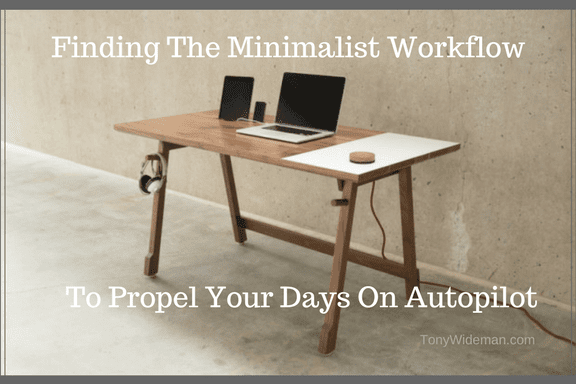How to Declutter Your Home In 6 Easy Steps
Declutter your home and create a clutter-free living space improves the overall appeal and creates a stress-free environment that promotes more productivity and relaxation.
However, decluttering can be a lot of work if you don’t have a clear plan. We will explore how to better help you declutter your home and regain control over your living space.
The Benefits of Decluttering Your Home
Decluttering your home offers a number of benefits beyond just tidying up. By eliminating unnecessary clutter, you can experience:
- Increased productivity: A clutter-free environment reduces distractions and enables you to focus better on the tasks at hand.
- Reduced stress: Clutter can cause anxiety and overwhelm. Decluttering counteracts that and promotes mental well-being.
- Better organization: With fewer items to manage, it becomes easier to find and access the things you need.
Step 1: Set Clear Goals
Before diving into decluttering, it’s crucial to establish clear goals. Ask yourself what would be the ideal result you would like to achieve in this process.
Define specific objectives, such as decluttering the entire house or focusing on specific rooms.
Step 2: Start with One Room
Decluttering your entire home at once can be overwhelming.
Begin with a small, manageable area like the living room or kitchen. This allows you to experience a sense of accomplishment and motivates you to continue.
Step 3: Edit and Organize
Start by editing your belongings into categories such as keep, donate, sell, or throw away. Assess each item and determine its usefulness or value.
Be honest with yourself and let go of things you no longer need or love. Organize the items you choose to keep for further evaluation at a later date.
Step 4: Donate, Sell, or Throw Away
Once you have edited your belongings, decide what to do with the items you no longer need. Consider donating usable items to charities and friends, selling them online, or at a yard sale. Properly dispose of broken or unusable items to free up space.
Step 5: Create a System
To maintain a clutter-free home, it’s essential to establish a system that works for you. Assign designated places for each item and develop organizing habits that suit your lifestyle. This system will help prevent clutter from accumulating again in the future.
Step 6: Maintain the Clutter-Free Environment
Decluttering is an ongoing process. You just only just begun. Regularly dedicate time to decluttering and organizing to maintain a clutter-free environment. Implement a “one in, one out” rule, meaning whenever you bring a new item into your home, remove an old one.
Practical Tips for Decluttering Your Home
- Start with the most accessible areas to build momentum.
- Set a Pomodoro timer for short decluttering sessions to avoid burnout.
- Use storage solutions such as bins, baskets, and shelves to keep items organized.
- Consider digitalizing documents and photos to reduce paper clutter.
- Involve your family or roommates to share the responsibility and make it a collective effort.
The Psychology Behind Clutter
Clutter can be a reflection of our emotional state. It can be a result of attachment to possessions, fear of letting go, or a coping mechanism. Understanding the psychological reasons behind clutter can help you address them and develop healthier habits.
Decluttering your home may just be the first step of many when seeking to create a safe, healthy, and stress-free environment.
How Clutter Affects Your Well-being
Research has shown that living in a cluttered environment can impact your health and well-being negatively. Clutter contributes to stress, reduces focus, loss of productivity, and even affects sleep quality.
By decluttering your home, you create a space that promotes relaxation, mental clarity, and overall health and well-being.
Decluttering for Different Areas of the Home
Each area of your home requires specific attention when it comes to decluttering. Here are some tips for common areas:
- Kitchen: Discard expired food, organize utensils, and declutter countertops.
- Bedroom: Sort clothes, donate unused items, and create an organized wardrobe.
- Living Room: Clear out unnecessary decor, organize entertainment systems, and create designated storage for items like books and magazines.
- Home Office: Organize paperwork, declutter the desk, and create a system for managing documents.
Conclusion
Decluttering your home is a transformative process that goes beyond tidying up. By following the steps outlined in this article, you can reclaim your living space, reduce stress, and create a harmonious environment.
Embrace the journey of decluttering and enjoy the benefits of a clutter-free home.
[adrotate group=”9″]
[adrotate group=”12″]
FAQs:
Q: How long does it take to declutter an entire house?
A: The time required to declutter a house depends on various factors, including its size, the amount of clutter, and your availability. It can range from several days to weeks or even months.
Q: Can I hire a professional organizer to help with decluttering?
A: Yes, hiring a professional organizer can be a great option if you need guidance and assistance in decluttering your home. They can provide expert advice and help you streamline the process.
Q: What should I do with sentimental items I find hard to let go of?
A: Sentimental items can be challenging to declutter. Consider keeping a few meaningful items and finding creative ways to display or store them. Alternatively, take photographs of sentimental items to preserve the memories without keeping the physical objects.
Q: How often should I declutter my home?
A: Regular decluttering is recommended to prevent clutter from accumulating. Depending on your lifestyle and habits, decluttering every few months or once a year can help maintain an organized living space.
Q: What are some digital decluttering tips?
A: Digital decluttering involves organizing and minimizing digital files and data. Some tips include deleting unnecessary files, organizing folders and emails, and backing up important data to cloud storage or external drives.
[adrotate group=”9″]
[adrotate group=”12″]






